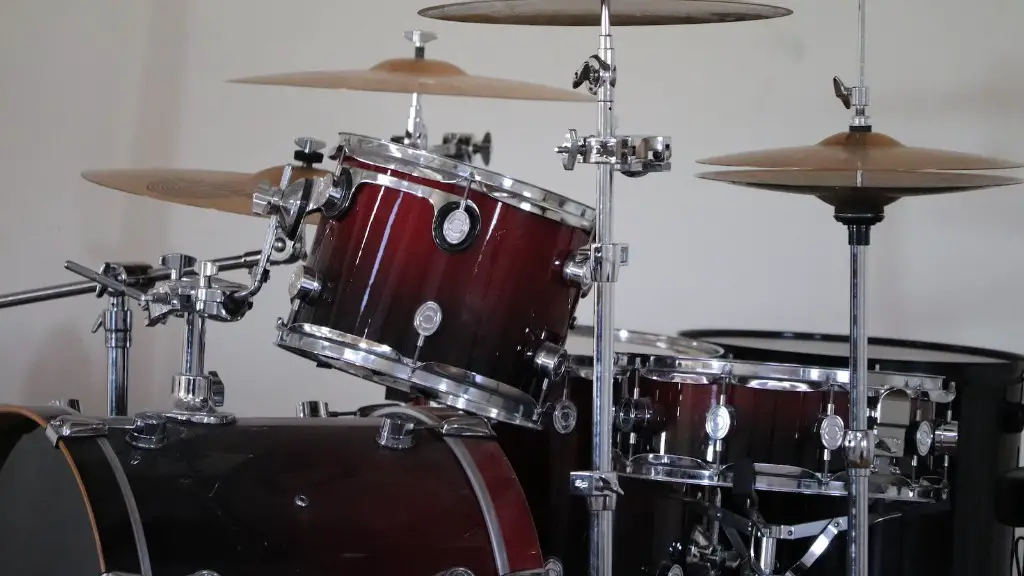Making an electric guitar case is not as hard as it may seem at first. With a few simple tools and materials, you can construct a sturdy and stylish case to protect your guitar.
You will need basic items like wood, screws, hinges, handles, and some foam padding. You will also need a jigsaw and drill for cutting the wood. Measurements of your guitar are also necessary for constructing the case.
The construction process involves several steps such as cutting the pieces of wood according to size, drilling holes for the hardware, attaching the hardware such as hinges and handles, fitting the foam padding into place, and finally sanding any rough edges for a smooth finish.
With patience and dedication you can make a great looking electric guitar case that will keep your guitar safe and sound!
Make sure to use quality materials that are both attractive and able to withstand wear-and-tear so your electric guitar case will last for years to come.
Attaching the Handle and Latches
The last step in making an electric guitar case is attaching the handle and latches. This can be done with a few simple tools such as screws, washers, and bolts. Start by attaching the washers to the underside of the guitar case with screws. Then attach the handle and latches to the washers with bolts. Secure all of these parts together by tightening them with a screwdriver or wrench. Be sure to use enough pressure so that they are firmly attached.
For extra security, consider using lockable latches for your case. This will ensure that your guitar is safe at all times. Once you have finished attaching the handle and latches, you should have a fully functional custom electric guitar case! Your instrument will now be securely protected when not in use.
Installing Foam Blocks
Creating a custom electric guitar case is easier than you think! The first step is to install foam blocks. These blocks provide a cushioned protection for the instrument, protecting it from bumps and scratches during transportation. You can find foam blocks at your local music store, or online. Start by laying the foam blocks out on the base of the case. Make sure that you are leaving enough space between each block for your instrument to fit snugly. Secure each block with a few drops of glue, or use double-sided tape if desired. Once all the foam blocks are in place, your electric guitar case is ready to go!
For added protection, consider using an additional layer of foam to cover the entire inside of the case. This will provide even more cushioning and protection against any potential shocks or impacts.
Glue the Center Lining
Once you have the parts of your electric guitar case cut out and ready, it’s time to start assembling them. Start by gluing the center lining of the case. This is important as it provides an inner barrier between the outside layer and the interior pockets. To glue this down, use a strong adhesive such as a hot glue gun or craft glue. Apply a generous amount of glue to one side of the center lining and press firmly against the inside of your electric guitar case. Make sure to cover all areas for a secure bond. Boldly press down on each side for maximum adhesion. Allow the glue to dry for several hours before continuing with the assembly process.
Once dry, you can move on to adding the pockets and other features that will help protect your guitar from bumps and scratches when in transit.
Sew the Fabric Covering
Creating an electric guitar case is a great way to protect your instrument from dings and scratches. The first step in making your case is to sew the fabric covering. Start by measuring and cutting your fabric so that it is slightly larger than the size of your guitar. Then, using a sewing machine, attach batting around the edges of the fabric. Next, fold up one side of the fabric and pin it in place. Sew along the folded edge, then turn the fabric right-side out and repeat with the other side. Once you have completed sewing all four sides, trim any loose threads and you’re ready to line your guitar case.
When sewing your case cover, be sure to use a strong thread that will stand up to wear and tear over time. Additionally, use a medium-weight fabric like canvas or denim for extra durability – it will help ensure your guitar stays safe no matter where you take it!
Attach the Foam Lining
The final step in making an electric guitar case is to attach the foam lining. You’ll need to cut out two pieces of foam for each side of the case and then use spray adhesive to attach them. Make sure you measure carefully and that the pieces fit snugly against each wall. It’s important to trim any excess foam away so that it doesn’t stick out past the edges of the case. Once the foam is firmly attached, you can add any additional items such as pick pockets or storage compartments. Finally, use a hot glue gun to attach any decorative touches like fabric or felt. This will ensure your case is secure and ready for travel.
It’s important to take your time when attaching the foam lining, as it can make a big difference in how well your guitar case holds up over time. Even if you’re not familiar with crafting or woodworking, most people can easily complete this task with a few simple tools and some patience. With a little effort, you’ll have a protective and stylish electric guitar case that will last for years to come!
Adding the Zipper to an Electric Guitar Case
Adding a zipper to an electric guitar case will ensure that the instrument is protected from dust and dirt. To begin, lay out the fabric for your case and measure the size of the opening for the zipper. Cut a piece of zipper tape twice as long as the opening. Place one side of the zipper tape along one side of the opening, pinning it in place. Sew it down using a zigzag stitch for extra strength. Do the same on the other side of the opening with the second piece of zip tape. Once both pieces are sewn in place, use a zipper foot attachment on your sewing machine to sew across both sides of the zipper teeth, joining them together. Be sure to backstitch at each end for extra security and durability. Finally, open up your newly installed zipper to make sure it works correctly before closing up your electric guitar case!
To Sum it All Up
Making an electric guitar case is a great way to protect your instrument and store it safely. With the right materials and tools, plus a bit of patience and practice, you can make your own case that fits your instrument perfectly. You’ll need to measure your guitar, make the cuts, assemble the pieces, and seal the edges with glue. Adding some handles and straps will make it easier to transport your guitar. Overall, building an electric guitar case is not difficult if you take your time and follow these steps.




